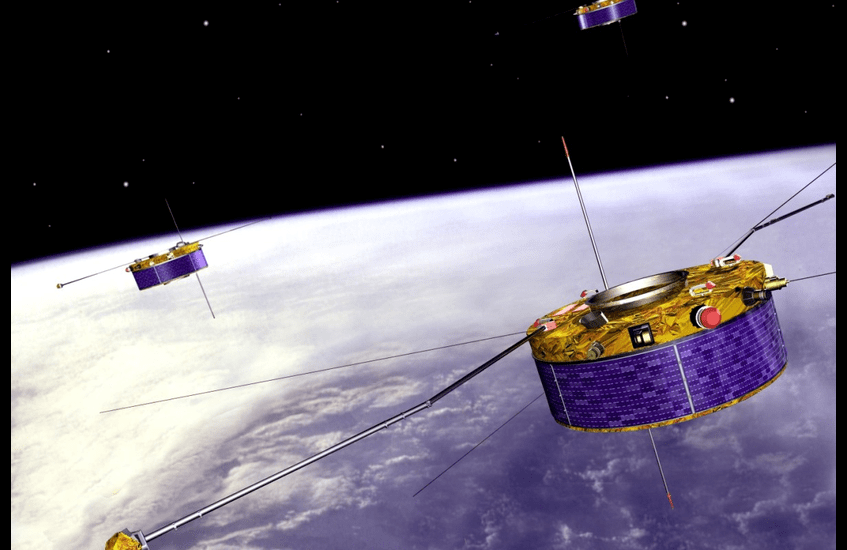Artist’s view. Illustration: ESA
About 20 years ago, the four Cluster satellites were launched to perform a three-dimensional investigation of the Earth’s magnetosphere. This ESA mission involved 18 different countries, with Norway being one the four largest contributors. The space physics group at the University of Bergen (today known as the Birkeland Centre for Space Science) has played an important part throughout the entire Cluster mission, building part of the RAPID instrument as well as performing data analysis.
The Cluster mission was supposed to be a 2-year mission, but today Cluster is heading into its third decade. By studying three dimensional plasma structures in the magnetopause, the polar cusps, the magnetotail, and the auroral zones, the Cluster mission has provided great new insight into the Earth’s magnetosphere. And new exciting research results keep coming! To provide a few examples in recent years by researchers at BCSS:
- Haaland et al. (2014): Characteristics of the flank magnetopause: Cluster observations. This paper discusses properties of the low‐latitude dawn and dusk flanks of the magnetopause, using Cluster measurements obtained between 2001 and 2010 during magnetopause traversals.
- Haaland et al. (2016): Low-energy Ion Outflow Observed by Cluster. The comprehensive data sets from the Cluster constellation of spacecraft provide a most wanted opportunity to assess the role of the low energy ions when it comes to mass lost from the Earth’s atmosphere.
- Haaland et al. (2017): North-South asymmetries in cold plasma density in the magnetotail lobes: Cluster observations. In this paper 16 years of Cluster observations are used to determine a persistent asymmetry in lobe density.
- Ohma et al. (2019): Observations of Asymmetric Lobe Convection for Weak and Strong Tail Activity. In this study Cluster data between 2001 and 2017 are used to investigate how near‐Earth tail activity affects the average convection pattern in the magnetotail lobes when the interplanetary magnetic field has a dominating east‐west (By) component.
- Haaland et al. (2020): Suprathermal Fe in the Earth’s Plasma Environment: Cluster RAPID Observations. The authors shows how suprathermal Fe ions may be found all over geospace. This study uses Cluster observations from 2001-2018.
Read more about the impressive Cluster mission in The Register: 20 years deep into a ‘2-year’ mission: How ESA keeps Cluster flying.




